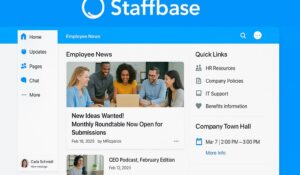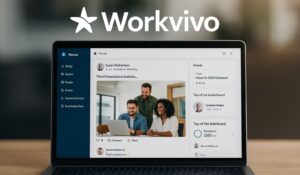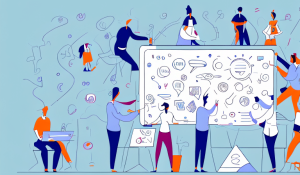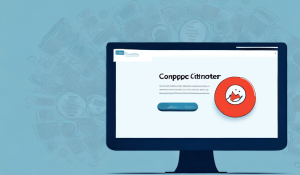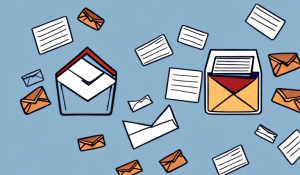An effective employee reward system is essential for creating a positive and motivated work environment. It not only helps in retaining top talent but also improves overall job satisfaction and productivity. And this need is urgent—U.S. employee engagement fell to a 10‑year low in 2024 at 31%, while global engagement sits near 21–23%. Low engagement is estimated to cost the global economy $8.9 trillion (≈9% of GDP) (Gallup; Gallup SOGW 2024). Strong, strategic recognition is one of the few proven levers to reverse these trends. In this article, we will explore what an employee reward system is, how it empowers employees, strategies for implementation, benefits, types of rewards, examples, and the role of technology and management. We’ll also show why HubEngage stands out as a modern, scalable recognition platform.
What is an Employee Reward System?
An employee reward system refers to a structured approach that organizations use to recognize and reward their employees for their hard work and achievements. It goes beyond monetary compensation and focuses on acknowledging employees’ efforts, contributions, and accomplishments. This system plays a vital role in enhancing employee engagement, motivation, and job satisfaction.
Key attributes of effective reward systems:
- Aligned with organizational values, goals, and culture
- Fair, transparent, and inclusive
- Designed with employee input and continuous feedback
- Scalable with the right technology such as employee recognition platforms to support growth
Performance-based Monetary Incentives
A strong reward system often incorporates performance-based incentives that link rewards directly to measurable outcomes. This ensures employees see a clear connection between their efforts and the organization’s success.
- Salary and Wages: Competitive compensation builds baseline satisfaction.
- Bonuses: Performance-based bonuses tied to KPIs motivate employees to exceed expectations.
- Profit Sharing: Provides direct financial alignment with company success.
- Stock Options: Encourages long-term commitment.
- Commission: Effective in sales and goal-driven roles.
- Signing & Retention Bonuses: Attract and retain top performers.
- Annual Raises & Spot Awards: Reinforce continuous improvement and timely recognition.
- Referral Bonuses: Incentivize bringing strong talent into the organization.
👉 Learn more about the benefits of monetary rewards to see how structured financial incentives can strengthen your reward system.
Non-Monetary Incentives
Non-monetary rewards play a critical role in any employee reward system. From recognition programs to career advancement opportunities, these incentives often create a stronger emotional connection than cash alone.
Examples include:
- Recognition and Appreciation: Employee of the Month, public shout-outs, or personal thank-you notes.
- Flexible Work Arrangements: Remote work and flexible schedules.
- Professional Development: Training, workshops, and mentorship.
- Career Advancement: Promotions and cross-training opportunities.
- Work-Life Balance: Wellness initiatives, family-friendly policies, and mental health support.
- Personalized Gifts: Customized recognition based on employee preferences.
👉 For more structured approaches, see our guide on employee recognition programs.
Group Performance Incentives
Reward systems also strengthen teamwork when they recognize collective success. Group rewards build camaraderie, collaboration, and a shared sense of accomplishment.
Examples include:
- Team bonuses and performance-based incentives
- Recognition for collaborative projects
- Team retreats, outings, or gamification challenges
- Peer recognition programs
👉 Learn how workplace recognition improves collaboration.
How Do Reward Systems Empower Employees?
Reward systems empower employees by reinforcing positive behaviors and validating their contributions. This leads to higher morale, motivation, job satisfaction, and even healthy competition that drives performance. In fact, employees with managers who are great at recognition are 40% more engaged (Harvard Business Review).

Strategies for Implementing an Effective Reward System
Designing a reward system is more than picking perks or issuing bonuses. To be effective, it requires a structured approach that aligns with company goals, fosters motivation, retains talent, and nurtures culture. The following strategies help ensure your program delivers real impact.
- Align with organizational goals – Reinforce desired behaviors tied to mission and values.
- Establish clear criteria – Promote fairness and transparency.
- Provide timely recognition – Recognize contributions promptly to maintain motivation.
- Offer variety – Mix monetary and non-monetary incentives.
- Leverage technology – Use an employee recognition platform for scalability and efficiency.
While these strategies are critical, research shows a major opportunity: only 22% of employees say they get the right amount of recognition at work. High‑quality recognition is also linked to 45% lower turnover two years later (Gallup).
👉 Compare how different organizations balance intrinsic and extrinsic rewards.
Benefits of an Effective Reward System
A well-structured system doesn’t just motivate employees—it also improves retention and strengthens culture. Benefits include:
- Increased motivation and job satisfaction
- Improved retention and loyalty, reducing costly turnover
- Enhanced productivity and performance
- Stronger employee engagement
- A culture of appreciation that strengthens organizational values and employer brand
These benefits aren’t just theoretical—they’re measurable. Employees who receive valuable feedback are 5× more likely to be engaged and 57% less likely to be burned out—and recognition amplifies that effect (Gallup/Workhuman).
Reward Systems and Retention
An intentional reward system directly supports retention by:
- Validating contributions so employees feel valued
- Creating long-term incentives like career growth or profit sharing
- Reinforcing loyalty through personalized and meaningful recognition
Employees with a positive employee experience are 68% less likely to consider leaving (SHRM).
👉 Explore how reward systems connect with employee benefits programs to further improve retention.
Reward Systems and Organizational Culture
Culture is the heartbeat of any organization, and reward systems directly influence how that culture takes shape. A thoughtfully designed program signals what behaviors are valued, how employees are expected to collaborate, and why belonging matters. When recognition is woven into daily practices, it not only motivates individuals but also reinforces shared values across the company.
Reward systems play a major role in shaping workplace culture. When recognition is consistent and fair:
- Employees experience a sense of belonging
- Shared values are reinforced through behavior-based rewards
- Teams collaborate more effectively and celebrate successes together
👉 See examples of creative employee awards that strengthen team culture.
Types of Rewards that Motivate Employees
Not all rewards have the same impact. The most effective systems combine different types of incentives to appeal to a variety of employee motivations. By offering a mix of monetary, non-monetary, and personalized rewards, organizations can ensure they are motivating individuals, retaining top talent, and strengthening overall culture. The most effective recognition is authentic, timely, and individualized to how each employee prefers to be recognized.
- Monetary rewards: Salary increases, bonuses, profit sharing, and stock options.
- Non-monetary rewards: Recognition, extra time off, flexible schedules.
- Personalized rewards: Gift cards, experiences, or tailored incentives.
👉 Explore more employee reward ideas to discover creative approaches that complement monetary and non-monetary incentives.
Examples of Effective Reward Systems
To bring these ideas to life, here are a few practical examples that illustrate how organizations put reward systems into action. These approaches show how motivation, retention, and culture can all be strengthened through thoughtful design.
- Company-wide recognition programs – Encourage peer-to-peer appreciation.
- Employee of the Month – Builds role models for performance.
- Spot awards and bonuses – Reinforce high performance quickly.
- Appreciation Day events – Fun ways to strengthen team bonds.
The Role of Management in an Effective Reward System
Management plays a pivotal role in shaping how reward systems are perceived and adopted across the organization. Leaders set the tone for fairness, transparency, and consistency, ensuring the system motivates employees, retains talent, and builds a culture of recognition. Notably, managers account for ~70% of the variance in team engagement—investing in manager capability has outsized impact (Gallup SOGW 2024).
- Communicate goals and expectations clearly
- Provide feedback consistently
- Ensure fairness and transparency
- Encourage collaboration and team recognition
Role of Recognition Platforms in Employee Reward Systems
Modern organizations use recognition technology to manage and scale reward systems. A comprehensive employee recognition platform not only tracks performance but also integrates communication, feedback, and gamification. These systems also nudge recognition frequency—important because teams receiving weekly recognition report 61% engagement versus 38% when recognition is less frequent (Gallup/Workhuman).
👉 Learn why companies choose top employee recognition software to build sustainable programs.
Why HubEngage is a Great Employee Reward System
HubEngage goes beyond traditional approaches:
- Easy setup and customization
- Seamless HRIS and system integrations
- Multi-channel communication (apps, web, SMS, Slack, Teams, signage)
- Real-time reporting and analytics
- Personalized recognition tailored to employee preferences
By choosing HubEngage, organizations enhance engagement, loyalty, and overall productivity while saving time and reducing admin overhead.
👉 If you’re ready to explore how this can work for your team, visit our Employee Recognition Hub for details and options.
Conclusion
The evidence is clear: organizations that design thoughtful, well‑structured reward systems see higher motivation, stronger retention, and healthier cultures. With modern tools, you can scale recognition, automate rewards, and measure impact with precision. An effective reward system is truly a cornerstone of organizational success—supported by the right recognition platform, it fosters motivation, retains talent, and strengthens culture.
👉 See a demo to learn how HubEngage can unify rewards, recognition, and communication into one platform. You can also explore more in our employee recognition software guide to see how leading companies are making recognition a competitive advantage.
FAQs
What is an employee reward system?
An employee reward system is a structured program that recognizes and compensates employees for their contributions, through both monetary (bonuses, raises, stock options) and non-monetary (recognition, flexibility, career development) incentives.
Why are employee reward systems important, and how do they help with retention?
They motivate employees, reduce turnover, and strengthen workplace culture. Recognition and meaningful rewards build loyalty, and employees with a positive experience are significantly less likely to consider leaving.
What types of rewards should be included?
A balanced system includes monetary rewards (salary increases, bonuses), non-monetary rewards (recognition, time off), and personalized rewards (gift cards, experiences).
How do reward systems influence company culture?
They reinforce values and shape behavior. Employees are more likely to feel connected to culture when recognition “hits the mark.”
What role does technology play, and how can success be measured?
Recognition platforms make rewards scalable, timely, and measurable by integrating with HRIS, automating recognition, and providing analytics. Success can be measured by tracking KPIs such as engagement scores, retention rates, productivity metrics, and employee feedback.





